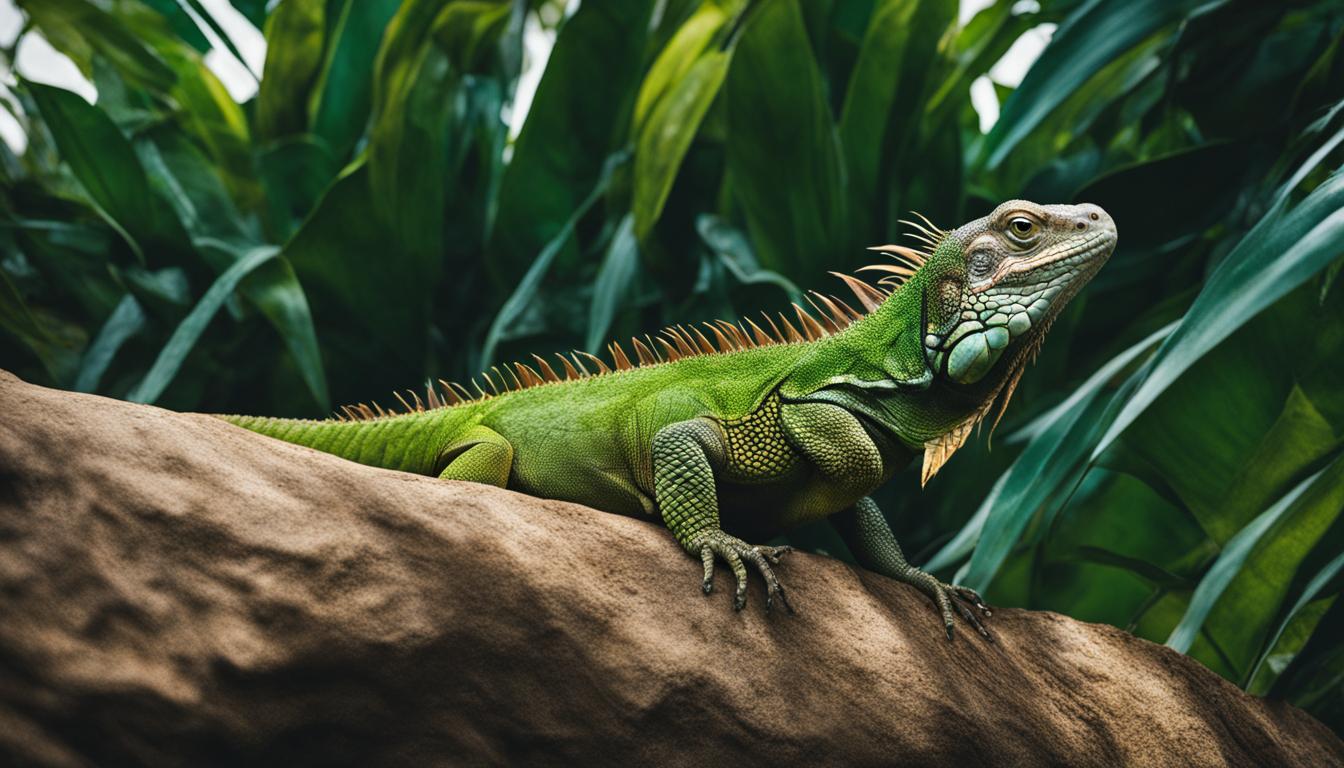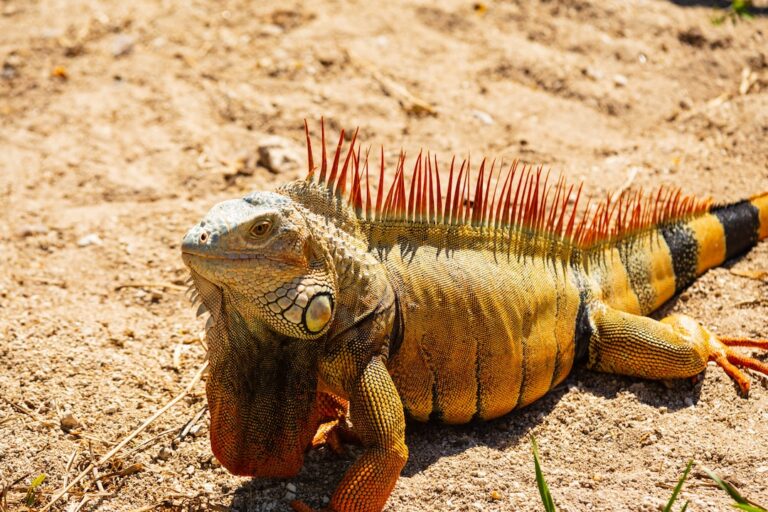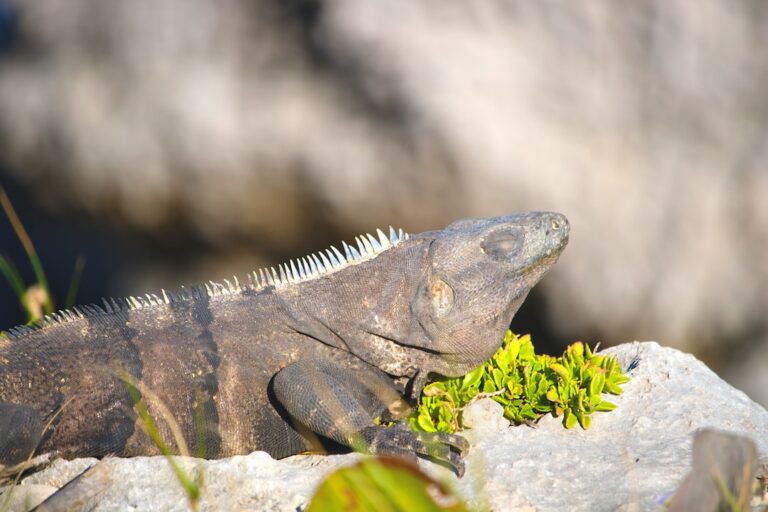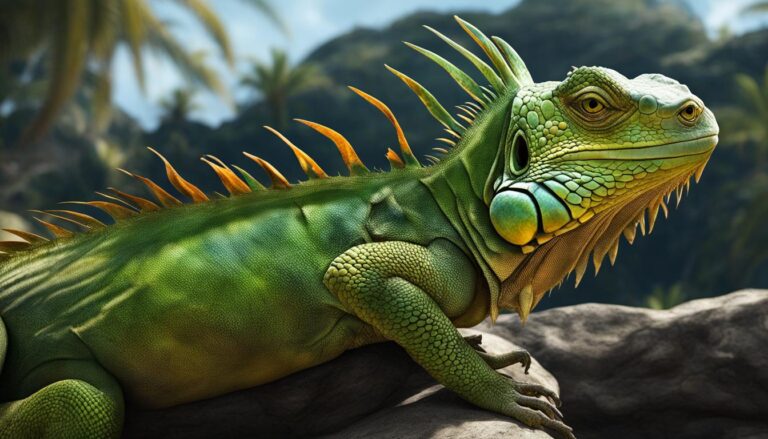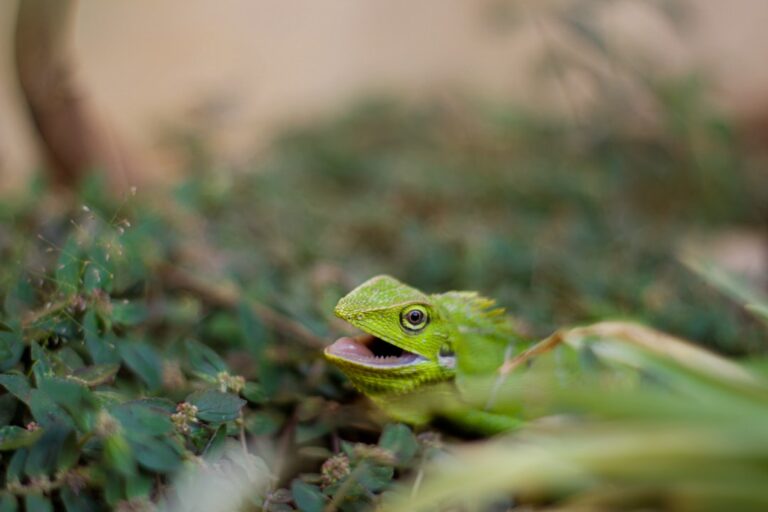Do Iguanas Run On Their Back Legs?
Iguanas are fascinating creatures that belong to the family Iguanidae. They are known for their unique characteristics, such as their long tails, sharp claws, and the ability to change color. These reptiles are native to tropical regions of Central and South America, as well as the Caribbean Islands. Iguanas are primarily herbivores and spend most of their time in trees, where they can bask in the sun and find food.
Understanding iguana locomotion is crucial for several reasons. Firstly, it allows us to appreciate and admire the natural abilities of these creatures. Secondly, it helps us provide suitable environments for pet iguanas, ensuring their health and well-being. Lastly, understanding iguana locomotion can help prevent injuries and illnesses by identifying potential hazards or stressors in their environment.
Table of Contents
The Anatomy of Iguanas and their Leg Structure
To understand how iguanas move, it is essential to examine their anatomy and leg structure. Iguanas have a long body with a slender neck and a tail that can be as long as their body. Their legs are strong and muscular, with sharp claws that aid in climbing trees and gripping surfaces.
The leg structure of iguanas plays a significant role in their movement. Their hind legs are longer and more powerful than their front legs, allowing them to jump from branch to branch with ease. The front legs are shorter and used primarily for balance and support while climbing or walking on the ground.
How Iguanas Move in their Natural Habitat
In their natural habitat, iguanas use various types of movement to navigate their surroundings. One common form of locomotion is walking or crawling on all fours. This movement is used when iguanas are on the ground or when they need to move slowly and cautiously.
Another type of movement is climbing. Iguanas are excellent climbers and can scale trees and other vertical surfaces with ease. Their sharp claws and strong legs allow them to grip onto branches and maneuver through the treetops.
Iguanas also use jumping as a form of locomotion. With their powerful hind legs, they can leap from one branch to another, covering significant distances in a single jump. This ability is especially useful when they need to escape predators or reach food sources.
Can Iguanas Run on their Back Legs?
There is a common myth that iguanas can run on their back legs, similar to how some mammals do. However, this is not true. Iguanas are not built for running on their hind legs, and their anatomy does not allow for such movement.
The Myth of Iguanas Running on their Hind Legs
The myth of iguanas running on their hind legs likely originated from observations of iguanas standing upright on their hind legs. While it may appear as if they are running, this behavior is actually a defensive posture used to intimidate predators or assert dominance.
Scientific evidence has debunked the myth of iguanas running on their hind legs. Studies have shown that the anatomy and musculature of iguanas are not adapted for bipedal locomotion. Their bodies are designed for climbing and jumping, not running on two legs.
The Reasons Why Iguanas Cannot Run on their Back Legs
There are several physical limitations that prevent iguanas from running on their back legs. Firstly, their bodies are elongated and heavy, making it difficult to maintain balance while running on two legs. Additionally, their leg structure is not designed for bipedal locomotion, as their hind legs are longer and more powerful than their front legs.
Comparisons can be made to other animals that can run on their hind legs, such as kangaroos or certain species of lizards. These animals have evolved specific adaptations to enable bipedal locomotion, such as modified hip and leg joints. Iguanas lack these adaptations, making it physically impossible for them to run on their back legs.
Other Forms of Locomotion Iguanas Use
While iguanas cannot run on their hind legs, they have other forms of locomotion that they use in their natural habitat. One of these is swimming. Iguanas are excellent swimmers and can move through water using their powerful tails and strong limbs. Swimming allows them to reach new food sources and escape from predators.
Climbing is another important form of locomotion for iguanas. Their sharp claws and muscular legs enable them to grip onto branches and maneuver through the treetops. Climbing is not only a means of transportation but also a way for iguanas to find food and bask in the sun.
The Importance of Understanding Iguana Locomotion
Understanding iguana locomotion is crucial for their health and well-being, especially for pet iguanas. By understanding how they move in their natural habitat, we can provide suitable environments that mimic their natural surroundings. This includes providing ample climbing opportunities, such as branches or platforms, and ensuring that the enclosure is large enough for them to move around comfortably.
Understanding iguana locomotion can also help prevent injuries and illnesses. By identifying potential hazards or stressors in their environment, such as sharp objects or improper temperatures, we can take steps to mitigate these risks and ensure the safety of our pet iguanas.
Tips for Properly Caring for Iguanas
Proper care and maintenance are essential for the well-being of pet iguanas. Here are some practical tips to ensure their health:
1. Provide a suitable environment: Create an enclosure that mimics their natural habitat, including climbing opportunities, basking spots, and hiding places.
2. Maintain proper temperatures: Iguanas require a temperature gradient in their enclosure, with a basking spot that reaches around 95°F (35°C) and a cooler area around 80°F (27°C).
3. Offer a varied diet: Iguanas are herbivores and require a diet rich in leafy greens, vegetables, and fruits. Avoid feeding them animal protein, as it can lead to health issues.
4. Provide UVB lighting: Iguanas need UVB lighting to synthesize vitamin D3, which is essential for calcium absorption and bone health.
5. Regular veterinary check-ups: Schedule regular visits to a reptile veterinarian to ensure your iguana is in good health and to address any potential issues.
Appreciating Iguanas for Who They Are
In conclusion, understanding iguana locomotion is crucial for appreciating these unique creatures and providing them with proper care. While the myth of iguanas running on their hind legs may persist, scientific evidence has debunked this notion. Iguanas are not built for bipedal locomotion and are better suited for climbing, jumping, and swimming.
By understanding their natural abilities and limitations, we can create suitable environments for pet iguanas and ensure their health and well-being. It is important to appreciate iguanas for who they are and provide them with the care they need to thrive in captivity.
If you’re curious about the unique behaviors of iguanas, you might also be interested in learning why they bob their heads. This fascinating article from Reptile Friend explores the reasons behind this behavior and provides insights into the communication and territoriality of these reptiles. To delve deeper into the world of iguanas, check out http://reptilefriend.com/why-do-iguanas-bob-their-heads/.

